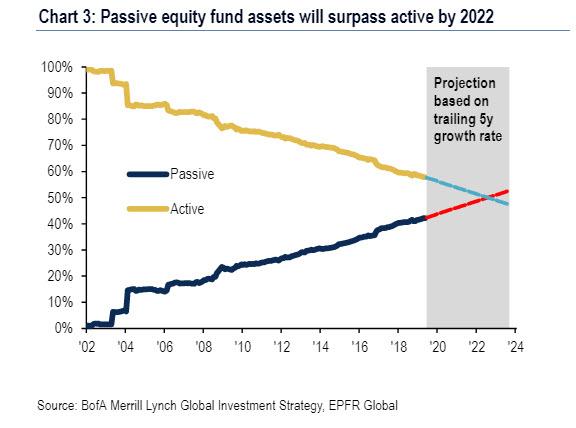ETFs used to be touted as a great way to gain exposure to the stock market. But now, thanks to fee-hungry issuers, the tail is wagging the dog and ETFs are the stock market.
As far back as late 2017, there were just 3,671 domestic listings, according to the Wall Street Journal. The number had declined due to the growth of venture capital and private equity.
"The number of public companies in the U.S. has been on a steady decline since peaking in the late 1990s. In 1996 there were 7,322 domestic companies listed on U.S. stock exchanges. Today there are only 3,671. Easy access to venture, growth and private-equity capital means that companies no longer need to pursue an initial public offering to fund growth or access liquidity," the WSJ wrote about 3 years ago.
Since then, the number has continued to decline. Yesterday on CNBC, it was reported that there are now less than 3,000 public listings. But there's now more than 7,000 ETFs globally.

We have often discussed the liquidity crisis that could be created from passive investing in ETFs as their popularity grows. Additionally, the use of ETFs as trading vehicles instead could wind up distorting the true price of the underlying stocks held within them.
Late last year we noted that passive funds had surpassed active funds thanks to the Fed basically making active investing obsolete. Retail masses followed this lead, which has spurred the demand for ETFs that have allowed them to continue to pop up at an alarming rate.
Recall, back in September of 2019, Michael Burry had claimed that "Passive investments such as index funds and exchange-traded funds are inflating stock and bond prices in a similar way that collateralized debt obligations did for subprime mortgages more than 10 years ago."
He continued: “Like most bubbles, the longer it goes on, the worse the crash will be. This is very much like the bubble in synthetic asset-backed CDOs before the Great Financial Crisis in that price-setting in that market was not done by fundamental security-level analysis, but by massive capital flows based on Nobel-approved models of risk that proved to be untrue.”
In case anyone has wondered just how long it has gone on, the widening delta between listed companies and global ETFs gives an indication of exactly how distorted things have become.
